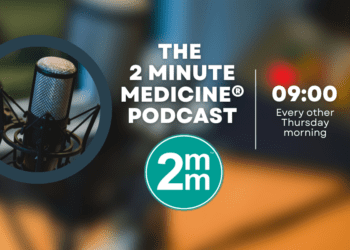Live MMR vaccine associated with lower hospital admissions for any infection
Image: PD
1. Receipt of live measles, mumps and rubella (MMR) vaccine compared to the inactivated diphtheria, tetanus, pertussis, polio and Haemophilus influenza type b (DTaP-IPV-Hib) was associated with lower hospital admission rates for any infections.
2. The schedule in which the vaccinations are given were important in conferring these protective effects with the most protective effects seen when MMR is given after three doses of DTaP-IPV-Hib.
Evidence Rating Level: 2 (Good)
Study Rundown: Live vaccines may have nonspecific effects that effect morbidity of nontargeted diseases determined by the most recent vaccination. This study examined Danish children between the ages of 11 months and 2 years that were vaccinated with live MMR as their most recent vaccine compared to inactivated DTaP-IPV-Hib as their most recent to determine the effects on hospital rates due to any infection between the ages of 16 months to 24 months. The study found that those who received MMR as the most recent vaccination had a lower risk of hospitalization due to any infection, with the most protective effects seen with respiratory tract infections. When the vaccines were given in the recommended order with MMR after the third dose of DTaP-IPV-Hib, the risk of admissions decreased with time after MMR vaccine. When given in a reversed order with MMR given between the second and third dose of DTaP-IPV-Hib, the trend was not seen. Furthermore, this reversed schedule was associated with an increase in hospital infections when DTaP-IPV-Hib was the most recent vaccine. A major strength of this study is its ability to examine a large population of children in a high income country to observe non-specific effects, something that has not been done to date. The study controlled for confounders and had consistency with previous study in low income settings. However, this study is limited in its applicability to other populations as the study only examines Danish children where the types of infections may differ from those in other high income countries such as the United States. Overall, the study argues for further research to the nonspecific effects of vaccines in prevention of infections.
Click to read the study, published today in JAMA
Click to read an accompanying editorial in JAMA
Relevant Reading: Non-specific effects of diphtheria-tetanus-pertussis and measles vaccinations? An analysis of surveillance data from Navrongo, Ghana
In-Depth [retrospective cohort]: This study examined 495,987 children between the ages of 11 months and 2 years with 490,838 receiving the live MMR vaccine as the most recent and 19,219 receiving inactivated DTaP-IPV-Hib as the most recent vaccine. For those on a recommended schedule, the adjusted incidence rate ratio (IRR) of hospital admissions was 0.86 (95% CI, 0.84-0.88) for those who received MMR after three doses of DTaP-IPV-Hib compared to those who received no MMR after the three series. In the reversed schedule, IRR was 1.62 (95% CI, 1.28 – 2.05) if DTaP-IPV-Hib 3 after MMR was the most recent vaccine. The risk of hospital admission between ages 16 months and 24 months was higher for those not vaccinated with MMR before the age of 16 months (5.6%) compared to those vaccinated before 16 months (4.6%). The number needed to vaccinate before 16 months to prevent 1 hospital admission was 201 (95% CI, 159- 272). Furthermore, when looking at MMR vs DTaP-IPV-Hib3 as the most recent vaccine, the number needed to vaccinate with MMR to prevent 1 hospitalization was 93 (95% CI, 82-109).
More from this author: Early onset dementia strongly correlated with alcohol intoxication in men, Perceived futility of treatments in the ICU dependent on key patient factors, Separate panels of microRNAs may aid in early detection of pancreatic cancer, Reduced doses of human papillomavirus vaccine may be effective in preventing condyloma, Long term gastric acid suppression associated with vitamin B12 deficiency
©2012-2014 2minutemedicine.com. All rights reserved. No works may be reproduced without expressed written consent from 2minutemedicine.com. Disclaimer: We present factual information directly from peer reviewed medical journals. No post should be construed as medical advice and is not intended as such by the authors, editors, staff or by 2minutemedicine.com. PLEASE SEE A HEALTHCARE PROVIDER IN YOUR AREA IF YOU SEEK MEDICAL ADVICE OF ANY SORT.







![Maternal cell-free DNA sequencing superior to standard aneuploidy screening [CARE Study]](https://www.2minutemedicine.com/wp-content/uploads/2014/02/47-karyotype-75x75.jpg)